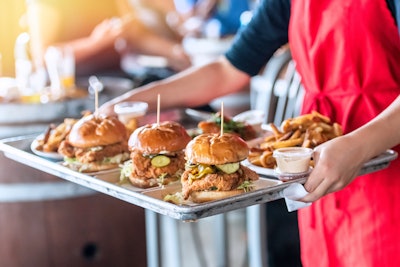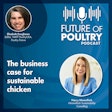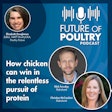
Understanding what the future consumer values will help set the chicken industry up for success over the next decade and beyond.
“Between now and 2035, there is a big black box and we have to figure out what’s inside,” Christophe Pelletier, global food and agriculture futurist, strategist and advisor, The Food Futurist, said during his keynote presentation at the 2024 Chicken Marketing Summit.
“We have to try to figure out what’s inside.”
Looking in the rearview mirror
There has been a 10% growth in the world’s population between 2013 and now, placing a greater strain on the natural world and growing interest on sustainability.
The digital world has also undergone a transformation over the past decade – from social media to online shopping. This has both positive and negative impacts on society, but has definitely impacted how consumers view the world, Pelletier explained.
In turn, the world is now embroiled in an emotional battlefield, with many consumers embracing social causes such as animal welfare. Beliefs tend to trump facts nowadays, he added, a major challenge for the chicken and other industries.
Crystal ball predictions for 2035
Pelletier shared several predictions for the future:
- The world population will continue to grow, with an 11% increase predicted by 2035. Greater consumer demand will result in more competition, Pelletier predicted.
- The industry should also be aware that climate events could occur at a great frequency over the next decade, resulting in volatility and anxiety about where animal feed can be produced. Water shortages could also be a worry in 2035, impacting the availability of feed, as well as the price of food.
- The current highly pathogenic avian influenza (HPAI) outbreak could also be a concern. If the zoonotic disease becomes widespread in people, it could cause another global pandemic like COVID-19 and put animal farming in the spotlight in a negative way, he cautioned.
- Changes in mental and physical health – caused, in part, by social media anxiety – will also make consumers rethink and revisit their food choices. Increasingly, consumers believe their food choices impact their mental and physical health. Chicken is traditionally viewed as a healthy protein, so it should benefit from this belief, Pelletier said.
- New technologies will make chicken better, safer, more sustainable and affordable. This includes artificial intelligence (AI), which Pelletier predicts will have a significant effect on every part of the value chain, if it is set up correctly.
- The U.S. population will be older in 2035, with more consumers over the age of 65 than ever before. Chicken companies should keep this in mind when planning for the future, he advised. Focusing on Generation Z, this demographic has its contradictions in beliefs, but value and values are most important to them when it comes to purchasing decisions.
- For the future consumer, an emotional connection will be more important than communication. They want a brand that matches their values. This also means chicken marketers should be focused less on telling, more on the showing values.

















